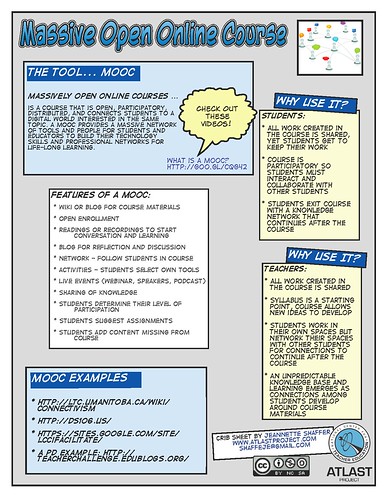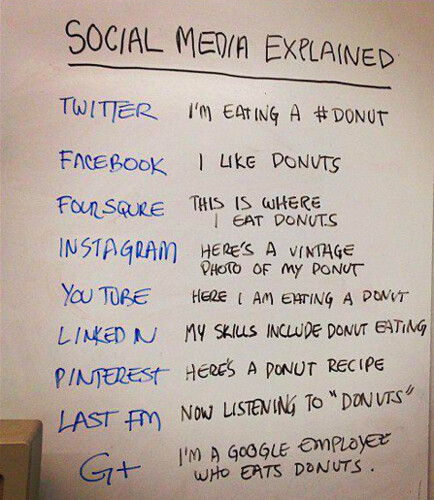Information, inspiration and ideas to help teachers in and out of the classroom
Friday, January 25, 2013
More Free Online Courses For You & Your Students
Tags:
five for friday
Drop In! Top Schools From Berkeley to Yale Now Offer Free Online Courses [Mashable!]
Stanford Offers Free Game Theory Course [Wired:GeekDad]
Thanks to This Free Class, Every Educator Can Learn Design Thinking [GOOD]
Top UK universities launch free online courses [The Guardian]
Hack Design Delivers Design Lessons to Your Inbox Each Week [Lifehacker]
Wednesday, January 16, 2013
"No Excuses" Is a Powerful Idea in Education
Tags:
education issues
 |
| Student rendition of my classroom, circa 06-07 |
Today on This Week in Education, Paul Bruno declared "No Excuses," the mantra made popular by KIPP and others in the charter school movement, a meaningless education phrase. He was responding in part to reports of Washington, D.C. charter schools having high expulsion rates, implying that "No Excuses" is mainly used as a reason to kick out kids who cause problems.
Many charter schools and organizations have adopted the "No Excuses" idea from KIPP and used it for a number of reasons. It is translated into very high expectations for teachers, staff, students and parents on all fronts. It is sometimes (and in my admittedly narrow experience, very rarely) used as a reason to expel students.
Bruno is missing the most important meaning behind "No Excuses," the one that drives teachers and leaders at every one of these schools.
"No Excuses" means that poverty, race, the neighborhood you live in, and the innumerable issues challenging low-income students and their families should not be accepted by society as excuses for why they can't succeed. Those factors should not stand in the way of a great education and a path towards a better life. We've come a long way towards getting past the idea that certain students "can't learn," but we're not there yet. Indeed, those of us that have worked in low-income communities will tell you how much we have to fight this idea among our own students, parents and teachers.
"No Excuses" stands in defiance of that lingering fallacy.
To paraphrase my friend JoAnn Gama, Co-Founder of IDEA Public Schools and member of President Obama's White House Initiative on Educational Excellence for Hispanics, being born into a low-income community should not be a guarantee that every successive generation will live in poverty. Education is a gateway out of poverty, and we should be making "No Excuses" as we push our students and ourselves on that path.
Friday, January 11, 2013
Weekend Reader on Sleep & Your Health
Tags:
five for friday
Eating Earlier in the Day May Make You Healthier and Sleep Better [Lifehacker]
Use a "Sleep Diet" to Ward Off Weight Gain [Lifehacker]
Do Some Math If You Have Trouble Falling Asleep [Lifehacker]
Students Who Stay Awake to Study Do Worse in School the Next Day [Wired:GeekDad]
Bruno: Sleep, Don't Study [This Week in Education]
Use a "Sleep Diet" to Ward Off Weight Gain [Lifehacker]
Do Some Math If You Have Trouble Falling Asleep [Lifehacker]
Students Who Stay Awake to Study Do Worse in School the Next Day [Wired:GeekDad]
Bruno: Sleep, Don't Study [This Week in Education]
Monday, January 7, 2013
Harness the Power of the Apps and Websites Our Students Use Every Day
The Pinterest of education.
The Facebook of education.
The YouTube of education.
As the use of technology in the classroom has risen, so has a cottage industry of supposedly classroom-friendly versions of the most popular, powerful and useful websites and apps available. These new websites and apps aim to fill a demand to take every good idea and create a version that allows teachers, parents and administrators strict control over content and use.
We don't need a "Pinterest of education," because we have Pinterest. We don't need the "Facebook of education," because we have Facebook, the most popular website in the world. We block and ban the real sites because we can't control everything students do or see. We spend millions of dollars on people, hardware and software to ban the most relevant technologies available, because we can't be bothered to figure out how to make our lessons more engaging than what these sites and apps offer.
Don't misunderstand: there are certainly many great, useful educational websites and apps and the need for them is growing. Yet while the education sphere rings loud with the call for curicula and lessons that are more relevant to our students' lives, at the same time they are fighting to avoid using things our students and the world around them use in real life every day.
As the next generation of apps that our students actually use comes to your attention--such as Twitter, Tumblr or any number of new photo and video sharing apps--don't go looking for the education version. Start thinking about how you can use the powerful, relevant tools in front of you.
Related: Educational Games Research » No Need to Reinvent the Wheel to Revolutionize Educational Video Games
Friday, January 4, 2013
Ideas For Getting Your Students to Write More
Tags:
five for friday,
literacy
Get them blogging: Blogging 2 Learn - Point your students at this site to help them get started with their own blog. The book below was written about a 9 year old student who started blogging about her school's poor food choices, a great example of the power of this medium.
 Start a penpal project: Penpal Exchange Helps Students Squash Red-Blue State Divisions [GOOD] - This is even more engaging and easy if you integrate it with Skype in the Classroom as noted below.
Start a penpal project: Penpal Exchange Helps Students Squash Red-Blue State Divisions [GOOD] - This is even more engaging and easy if you integrate it with Skype in the Classroom as noted below.
Connect with inspiration across the planet: 'Skype in the Classroom' Connects Kids to NASA and Global Experts [GOOD]
Provide the optimal atmosphere: Coffee Shop Buzz Is Good For Your Creativity and Why Distractions Can Actually Be Good for Creative Thinking [Lifehacker] - How can you recreate the ambient noise and occasional distractions needed for creativity without letting your classroom descend into chaos?
Use hip-hop and other music: Taking back the mic: Hip-hop as a STEM learning tool [The Root DC Live / WaPo]
BONUS: You could try a six word story, something I wrote about in A Lifetime in Six Words? Possible.
 Start a penpal project: Penpal Exchange Helps Students Squash Red-Blue State Divisions [GOOD] - This is even more engaging and easy if you integrate it with Skype in the Classroom as noted below.
Start a penpal project: Penpal Exchange Helps Students Squash Red-Blue State Divisions [GOOD] - This is even more engaging and easy if you integrate it with Skype in the Classroom as noted below.Connect with inspiration across the planet: 'Skype in the Classroom' Connects Kids to NASA and Global Experts [GOOD]
Provide the optimal atmosphere: Coffee Shop Buzz Is Good For Your Creativity and Why Distractions Can Actually Be Good for Creative Thinking [Lifehacker] - How can you recreate the ambient noise and occasional distractions needed for creativity without letting your classroom descend into chaos?
Use hip-hop and other music: Taking back the mic: Hip-hop as a STEM learning tool [The Root DC Live / WaPo]
BONUS: You could try a six word story, something I wrote about in A Lifetime in Six Words? Possible.
Subscribe to:
Posts (Atom)

